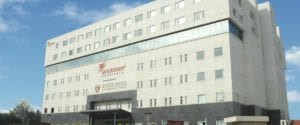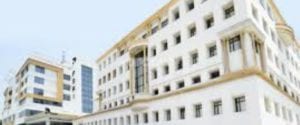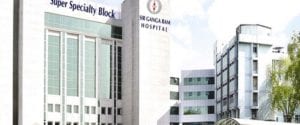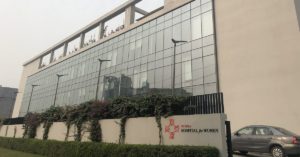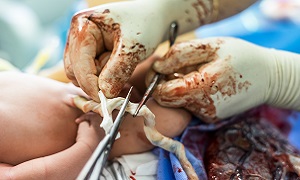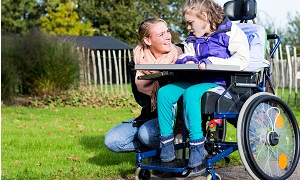Best Doctors in India for Congenital Limb Defect Correction
Best Hospitals in India for Congenital Limb Defect Correction
S L Raheja Hospital, Mahim, Mumbai
- City: Mumbai, India
Hospital Highlights:
- SL Raheja hospital is a 140-bed multi-specialty tertiary care hospital that is being managed by Fortis Healthcare Ltd.
- The hospital is a benchmark in healthcare and medical facilities in the neighborhood of Mahim & the western suburbs.
- L.Raheja Hospital, Mahim has one of the most effective ICU and Casualty care services.
- The hospital provides specialty medical services in Cardiology, Oncology, Neurology, Orthopedics, Mother & Child Care, and in Diabetes.
Wockhardt Hospitals, Mumbai
- City: Mumbai, India
Hospital Highlights:
- Wockhardt Hospitals were established in the year 1973, originally called First Hospitals and Heart Institute.
- Wockhardt Hospitals are super specialty health care networks in India, nurtured by Wockhardt Ltd, India’s 5th largest Pharmaceutical and Healthcare company.
- Wockhardt Hospitals is associated with Partners Harvard Medical International, an international arm of Harvard Medical School, USA.
- Wockhardt Heart Hospital performed India’s first endoscopic heart surgery.
- The hospital has a state-of-the-art infrastructure equipped with the latest technologies and modern equipment.
- It has special Centers of Excellence dedicated to the major specialties to provide hassle-free and high-quality clinical care.
Pushpawati Singhania Hospital & Research Institute, New Delhi
- City: New Delhi, India
Hospital Highlights:
- Established in 1996, Pushpawati Singhania Research Institute is one of the top hospitals in the NCR region, as well as one of the top facilities in India for gastroenterology. The hospital is one of South Asia’s first institutes in medical and surgical treatment for diseases related to digestion.
- The hospital is equipped with state-of-the art facilities coupled with the latest equipment as well as renowned consultants from various parts of India as well as other parts of the world.
Indian Spinal Injuries Center, New Delhi, India
- City: New Delhi, India
Hospital Highlights:
- The Indian Spinal Injuries Center (ISIC), provides state-of-the-art facilities for the management of all types of spinal ailments.
- Staffed with internationally trained, acclaimed, and dedicated spine surgeons, the hospital provides cutting-edge medical & surgical technology. The hospital provides comprehensive management of spinal injury, back pain, spinal deformities, tumors, osteoporosis, etc.
- The hospital performs motion-preserving spine surgeries including disc replacement and dynamic fixation, and minimally invasive spine surgeries such as endoscopic disc excision.
- The orthopedic service of the hospital covers all orthopedic ailments including trauma, joint diseases & replacements, oncology, pediatric orthopedics & upper limb ailment.
W Pratiksha Hospital, Gurgaon
- City: Gurugram, India
Hospital Highlights:
- W Pratiksha Hospital, Gurugram, is one of the best hospitals in the NCR region. It is also a top hospital in India for IVF. Since its inception, the hospital has performed over 5500 successful IVFs. The hospital also specializes in gynecology.
- With over 20 years of experience in providing quality healthcare, the hospital is known as one of the most trusted and valued health providers in India.
- Equipped with world-class medical facilities and advanced technology, the hospital’s doctors and clinicians also have a track record of delivering excellent results. The hospital is also known for focusing on preventive well-being as much as on curative treatment.
- The hospital has earned the trust of its patients, by providing the best available treatments at affordable costs.
Narayana Superspeciality Hospital, Gurugram
- City: Gurugram, India
Hospital Highlights:
- Situated near DLF Cyber City, Gurugram, Narayana Superspecialty Hospital is one of the top medical facilities in the Delhi NCR region, catering to the needs of the people. Known for its commitment to quality medical care and patient service, the hospital is a state-of-the-art facility with planned and well-equipped sections, which includes a spacious OPD area as well as comfortable patient rooms.
- It is the closest super-specialty hospital from Indira Gandhi International Airport towards Gurugram, and also the nearest super specialty hospital from DLF Cyber City. It is also close to major residential areas in Gurugram.
- It is part of the renowned Narayana Health Group. Established in 2000, by Dr. Devi Shetty, a renowned cardiac surgeon, it has grown to be one fo India’s leading healthcare groups.
Sir Ganga Ram Hospital, New Delhi
- City: New Delhi, India
Hospital Highlights:
- Sir Ganga Ram Hospital, New Delhi is known to provide the latest medical procedures with the latest technology in all of its units.
- The hospital has a team of reputed doctors, nurses, and healthcare professionals that ensure that patients receive quality care at affordable costs.
- Staffed with a team of highly qualified doctors, dedicated nurses, and paramedical and non-medical staff, the hospital aims to lead in healthcare delivery, medical education, training, and research.
- As per the vision of the founder, the hospital also provides free treatment to the economically weaker sections of society.
- Sir Ganga Ram Hospital also provides training to young doctors under the Diplomate in National Board(DNB) program. The DNB program at the hospital was started in 1984 and it is known for currently running the maximum number of DNB specialties in the country. It also has the distinction of having the first bone bank in India.
CK Birla Hospital, Gurugram
- City: Gurugram, India
Hospital Highlights:
- The CK Birla Hospital in Gurugram is a NABH-accredited multi-specialty hospital.
- The hospital strives to increase the quality of healthcare by focusing on UK NHS nurse and midwife training requirements. Policies and practices derived from the National Institute for Health and Treatment Excellence (NICE) recommendations in the United Kingdom ensuring that a strong focus on safety, high-quality clinical care, and sanitation is maintained.
- The hospital’s cutting-edge technology and facilities allow for real-time communication and seamless collaboration among caregivers, ensuring accuracy and the best possible results. Those with foreign experience and accreditations make up part of the hospital’s team of clinicians.
KIMS Hospital, Hyderabad
- City: Hyderabad, India
Hospital Highlights:
- KIMS Hospital (a brand name of Krishna Institute of Medical Sciences) is one of the largest and best multi-speciality hospitals in Hyderabad. The hospital provides various treatments to an enormous number of patients.
- The hospital has a capacity of more than 3000 beds. KIMS Hospitals offers different healthcare services in more than 25 specialities and super specialities.
- The hospital is equipped with modern medical equipment and technology. It has robotic equipment to provide minimal invasive techniques for patients.
- The hospital is aimed at providing world-class healthcare facilities and services at an affordable cost for patients.
- The various specialities and departments of the hospital include neurosciences, gastroenterology & hepatology, robotic science, reproductive sciences, dental science, oncological sciences, organ transplantation, heart and lung transplantation and mother and child care.
Fortis Hospital, Shalimar Bagh
- City: New Delhi, India
Hospital Highlights:
- Fortis Hospital in Shalimar Bagh is a multi-super specialty hospital that strives to provide world-class patient care by leaving no stone unturned.
- Fortis, Shalimar Bagh, with 262 beds and a 7.34-acre footprint, provides the best level of medical care through its team of doctors, nurses, technicians, and management professionals.
Congenital Limb Defect
Congenital Limb Defect is a medical condition or a birth defect that occurs in unborn babies where the entire upper or lower limb or a section of the limbs fails to form or grow normally leading to limb abnormalities or defects, as commonly known in the growing fetus.
Corrective measures for this condition vary from child to child with the overall corrective procedure aiming to help the child grow up and lead a normal life with the deformity.
Treatment techniques may range from surgical procedures to prosthetics or rehabilitation therapy.
Types of Limb Defects
Primarily there are two types of limb deficiencies, namely,
1. Longitudinal Deficiency- In this condition, there is either partial or complete absence of elements like radius fibula or tibia within the limb.
2. Transverse- In this condition, a portion of the element within the length of the limb is present, but only to a certain point and hence the limb may resemble an amputation stump due to the selective presence of elements in the limb.
Other types may include preaxial polydactyly, a classic example for which can be an extra finger, which may or may not be fully formed. In some rare cases, an extra duplicate ring, middle or index finger can be formed due to central polydactyly and Syndactyly is the webbing of fingers or toe, which is also considered a limb deformity or defect. The doctors or the medical team will help you understand the exact type of defect your child has and a medical treatment method or correction would be suggested based on the condition of the child.
General causes of Congenital Limb Defects
The exact cause for this condition cannot be pinpointed as of yet. However, medical professionals have researched some general causes that tend to cause congenital limb defects in babies. Some of them are-
- Unhostile uterine environment for the baby
- Genetic Conditions passed on by the heredity
- Growth restrictions or unfavourable conditions that affect the fetus development and growth within the uterus.
- Exposure to chemicals while still in the womb
- Intake of certain harsh or strong medications by the mother during pregnancy
Risks Factors for Congenital Limb Defects
Medical professionals list certain risks that might increase the chances of limb deformities or physical defects in unborn babies. Some of them are-
- Tobacco Exposure during pregnancy
- Chemical Exposure during pregnancy
- Mechanical Forces during pregnancy
Diagnosis
Diagnosis of the condition is done immediately after the birth of the baby. Usually, doctors may prescribe X-ray or genetic testing to determine underlying bone conditions or undiagnosed symptoms.
Possible correction or treatment methods
Treatment or corrective measures for this condition depends on the child’s age, weight and general health conditions. Other factors to be considered before deciding on the treatment method includes the baby’s tolerance to medications or therapies and the type of deformity the baby is suffering.
The usual treatment method includes:
Surgery
Prosthetics
Prosthetics are usually recommended for conditions where the entire limb along with its elements are missing.
Rehabilitation
The primary goal for congenital limb defect correction is to-
- Help the child develop the feeling of independence
- Help the child get accustomed to their lifestyle and normal routine despite the condition
- Ensure normal development of the child is not restricted due to this condition
- Cosmetically improve the overall outlook and convenience of the child
- Encourage the child to participate in self-care
Post treatment care & precaution
The initial days can be quite tough, not just for the patient, but for his or her family too. However, helping your child get used to independence and self-care from the very beginning is important since habit-forming attitudes at a tender age stick to you for the rest of your life. Families may try physical therapy at home or through a professional, based on doctor’s recommendations. Families are requested to wholeheartedly support the child suffering the defects and actively help them overcome daily activities or hurdles.
FAQs
What are the chances of my baby having congenital Limb Defect?
Currently, the statistics say 7.9/10,000 live babies can suffer from this condition.
Can ultrasound detect defects in unborn babies?
Ultrasound can often detect physical defects in the unborn baby, so chances are that conditions like congenital limb defects can be easily spotted during the later stages of the pregnancy. However, defects in the kidney, heart, or even certain cleft palate situations go unnoticed in ultrasound.
Can these limb defects be inherited?
95% of limb defects are not based on heredity or family history. However, certain conditions like extra toes or fingers can be due to inherited genes.


